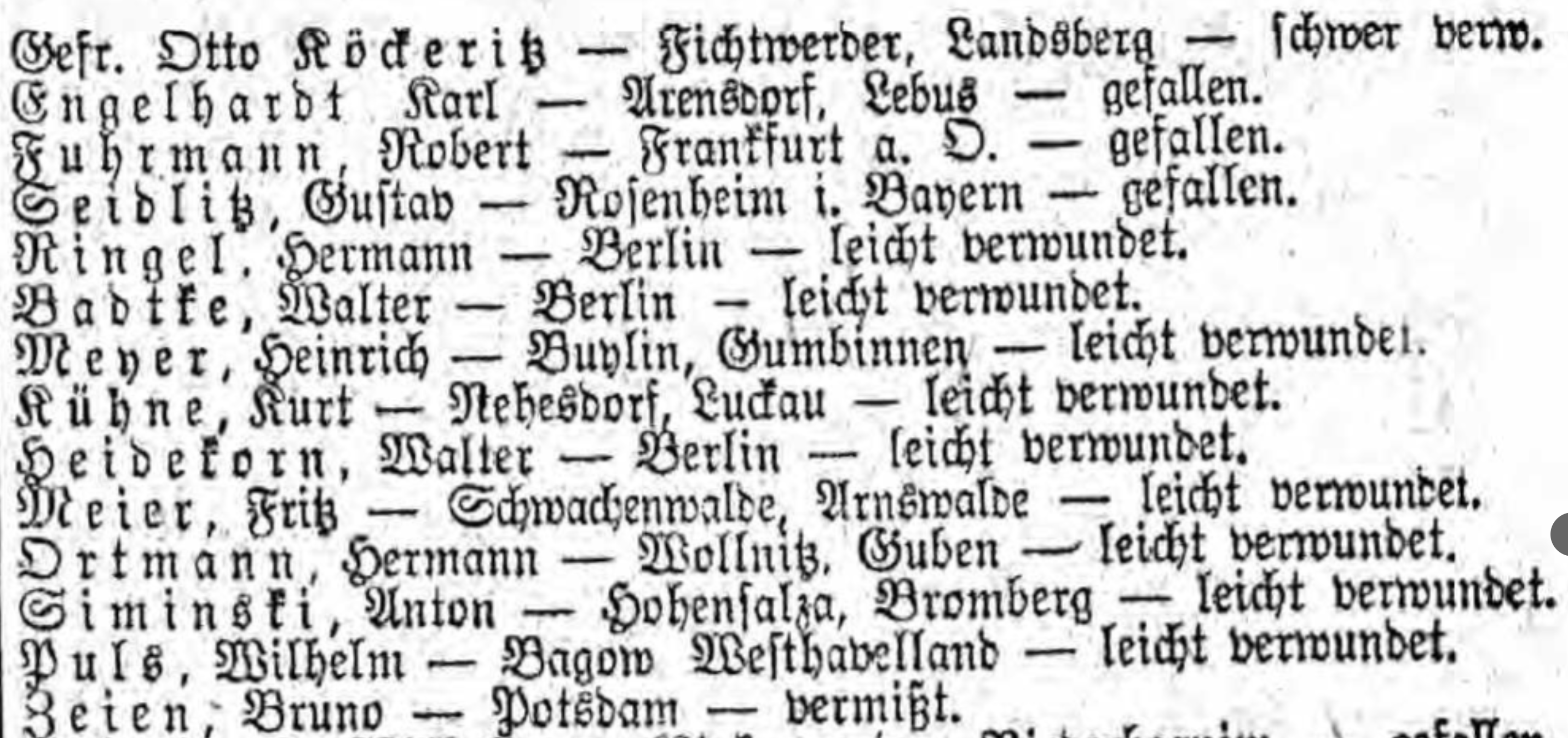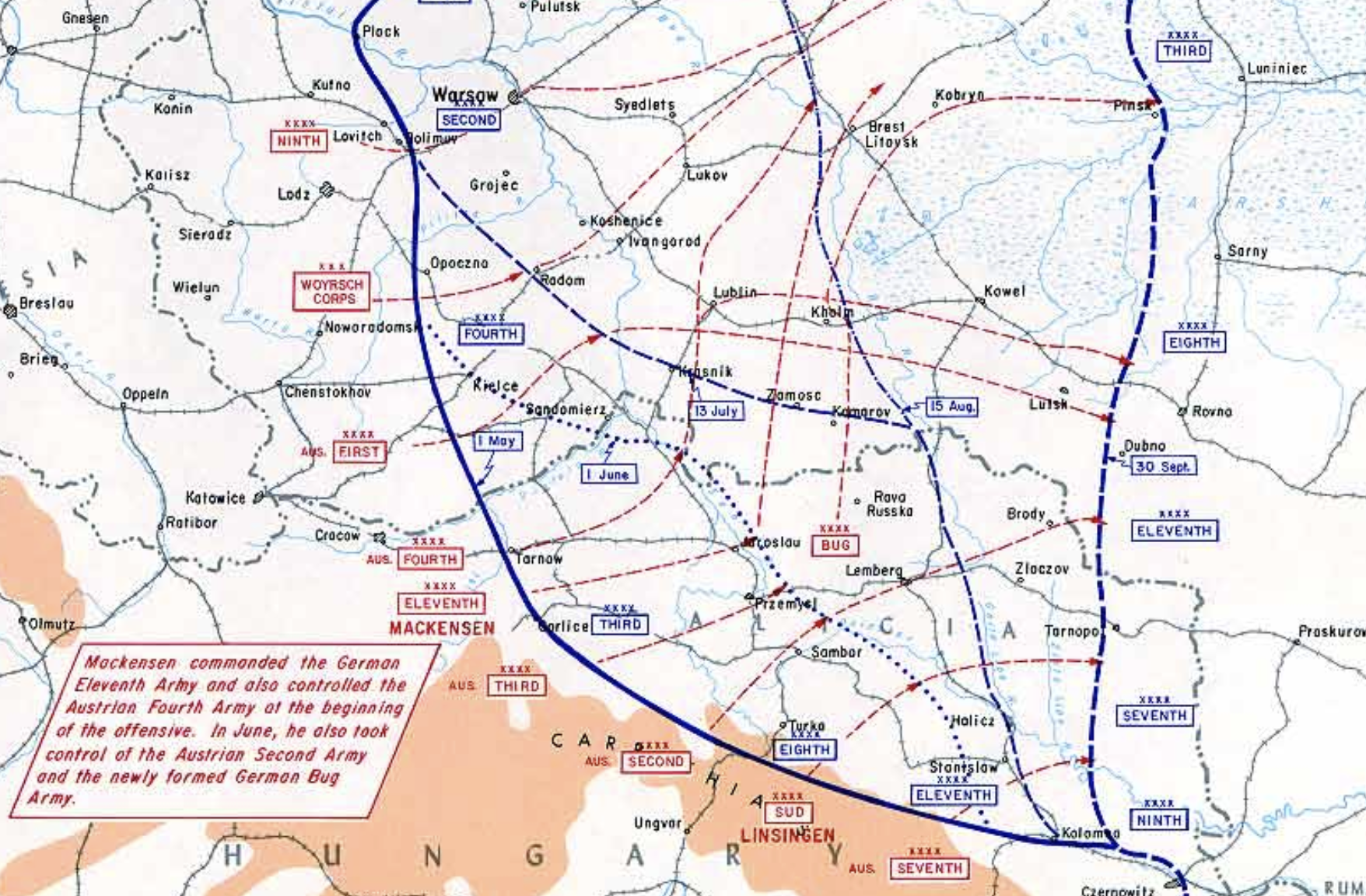WWI Eastern Front, summer 1915
Hermann may have been wounded in battle on the WWI Eastern Front
Reviewing Hermann Ringel records today, I looked more closely at this WWI casualty list suggested by Ancestry. I have been cautious about it because he was not the only Hermann Ringel from Berlin. However, if it is him, then this tells us quite a bit about his service in the German Imperial Army.
The record tells us that a Hermann Ringel from Berlin was reported as lightly wounded in battle on August 12, 1915. Whether his injuries were sustained on that day or a prior day is not clear. These listings are one day's worth of German casualties, including dead, missing and wounded, either severely or lightly.
He was in Company 4 of Battalion 1 of the 269th Reserve Infantry Regiment. I searched for a combat history of the regiment and learned that it was part of a reserve army division, the 81st, one of seven new divisions raised at the outset of the war. I will quote directly from Wikipedia.
The division was formed at the end of December 1914 and organized over the next month, arriving in the line in early February 1915....The 81st Reserve Division initially fought on the Western Front, seeing its first action in the trenches west of the Somme. It was transferred to the Eastern Front in April 1915, and fought in the Gorlice-Tarnów Offensive, crossing the San River and fighting around Przemyśl, and then fighting in the 1915 Battle of Lemberg.
It is a bit hard to decipher which Battle of Lemberg, or Lvov, is meant here, since there have been so many. Title turns out the reference is to the recapture of the city by Austrian and German forces in June 1915, after the earlier Russian sweep of Galicia the prior year.
The Gorlice–Tarnów offensive began as a limited campaign to push Russian forces out of southern Galicia in the Carpathian mountains but turned into a much broader Russian retreat all along Eastern Front.
The Germans formed a new Eleventh Army made up of eight divisions, trained in assault tactics in the west. They were brought east on 500 trains.The Army was led by the former commander of the German Ninth Army, General August von Mackensen.
In two weeks, German armies including the Eleventh advanced across southern Galicia to the natural boundary of the San River, where the Russians had a stronghold in the fortress city of Przemysl. After a heavy artillery barrage and siege, German forces entered the city on June 3, leading to the fall of Lemberg/Lvov two weeks later.
According to the detailed Wikipedia battle map, the Eleventh Army reached the San at Jaroslaw, upriver from Przemysl. From there, it turned sharply north with other forces, attacking the southern flank Russia’s Warsaw salient.
The new Russian line from Lublin to Chelm stood in the way of Mackensen's ultimate objective of Brest-Litovsk. By the time his men were engaged in heavy fighting along that line in the second week of August, the Russians had already evacuated Warsaw.
The line held for a period of weeks but only so long. Mackensen broke through and Brest fell to the Germans on August 25.
I haven't yet found a specific action report for any battles on the day of Hermann's casualty report. However, by retroactively pinpointing the position of the Eleventh Army on August 12, we can be fairly certain that the Hermann Ringel who is cited in the casualty listings sustained his injuries during offensive operations along the Lublin-Chelm-Kovel line.
But is it our Hermann? To be determined.



